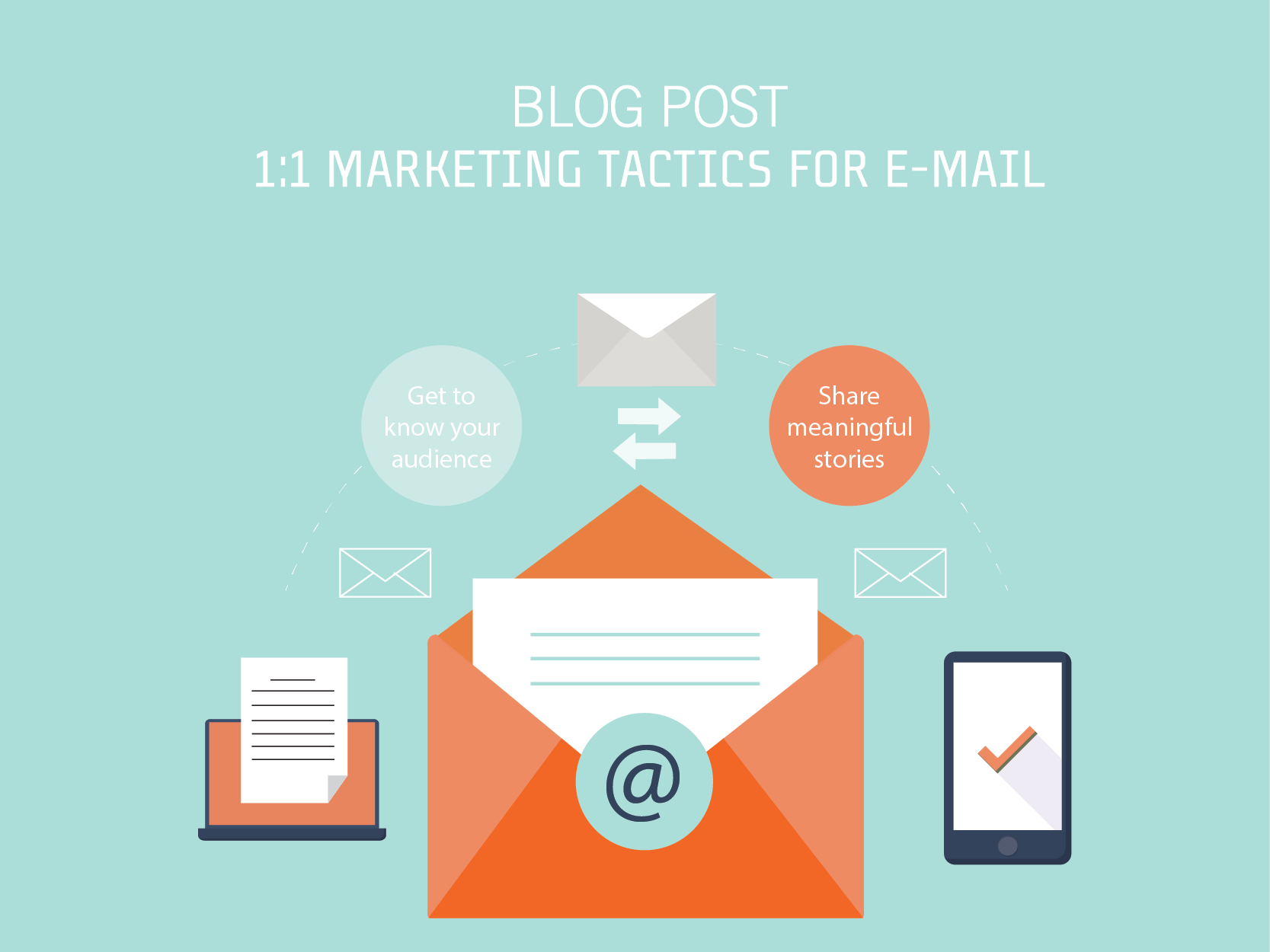Last week we talked about how to begin targeting members of your audience in your communications for a more personalized touch. Since we focused so much on how to deal with the data you have, we figured it might be a good idea to give you some actionable ways to begin implementing a personalized campaign. Sure, this is going to take a little bit of work on your part but our subject du jour is—drum roll please—e-mail: the amazing, often free-to-low-cost (for non-profits, especially!), customizable tool that virtually everyone uses.
Even though personalized marketing (or 1:1 as we sometimes call it) is known to lift response rates in various channels, it’s about so much more than just making it personal. The aim of 1:1 is individualization. Anyone can receive an e-mail addressed to them, but it doesn’t mean the sender necessarily knows anything about you. In all likelihood, you’re just part of a list. So consider this method of communicating an opportunity to present someone with words or images that make them feel known. Ready to get started?
Personalize your subject lines
The most obvious use of individualization in email is a personalized subject line. You might think that people have become cynical about seeing their name in a subject line, but a study conducted by AWeber and reported by Marketing Sherpa leads to the opposite conclusion. In a series of seven email campaigns, half the recipients received an email with their name in the subject line and the other half didn’t. That was the only difference and the results were dramatic! The open rate on the personalized emails was on average 5.13% higher than the regular emails and the click-through rate was a staggering 17.36% higher! Many e-mail marketing companies, like MailChimp for example, allow you to easily drop information like a recipient’s name into the subject line.
Try out triggered e-mails
If you’ve got a CRM system, you may be familiar with this foundational feature. How does it work? When someone takes a particular action in their relationship with your school, business, or organization, they automatically receive an email requesting additional information. For instance, someone visiting your site might opt in to receive information about upcoming events. When that happens, your CRM will generate an email that requests some additional information from them. So looking back to last week’s post, when you know more about individuals in your network you can better segment your lists and deepen communications based on personal interest, preference of channels, and even giving history (not just to you, but other types of organizations).
See also: Write E-mail Subject Lines That Get Opened
Different copy and content for those on the receiving end
Plain and simple: different segments receive emails with copy and content relevant to them. This should be pretty easy based on the information gleaned from them in that follow up message we talked about above. Here’s an example for fundraisers in education: Regular annual donors might get different content than lapsed donors or prospective donors. You might provide driving instructions or other forms of guidance in e-mails going out to prospective parents about your upcoming open house. E-mails can also refer recipients to links that are relevant to the particular target segment from which they come.
See also: How To Get Personal: Targeting
Personalized storytelling in e-newsletters
Similar to emails, you can tailor e-newsletter content based on individual target segments. For schools, you might send alumni stories about longtime favorite professor or play with nostalgia by including photos of every student’s favorite gathering spot on campus. Another tactic is to tell relevant neighborhood stories to those from particular geographic area. Donors who have supported a fund or project receive relevant updates about that project. Customizing e-newsletters can also be made easy by giving individuals content choices when they subscribe.
See also: There’s Always Room for a Story
—
Making members of your audience stand out and feel special is the first step to building lasting and trusting relationships. Every conversation is a give and take, and those conversations don’t last very long unless both parties feel the discussion is relevant to them. Remember, 1:1 in e-mail is just one piece of the puzzle. We find it’s most effective to have a well-rounded strategy that encompasses multiple channels and utilizes varied messaging. Check back next week to see how this works for direct mail.
Like what you see? Stay in touch!
You Might Also Enjoy:
+ Write E-mail Subject Lines That Get Opened
+ How To Get Personal: Targeting
+ There’s Always Room for a Story








